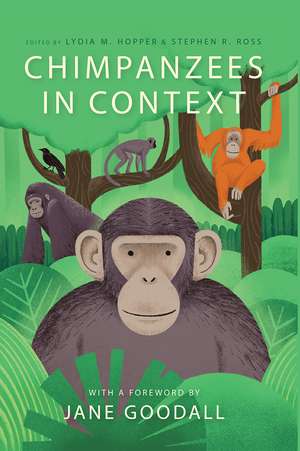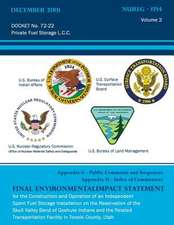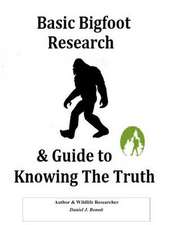Chimpanzees in Context: A Comparative Perspective on Chimpanzee Behavior, Cognition, Conservation, and Welfare
Editat de Lydia M. Hopper, Stephen R. Ross Cuvânt înainte de Jane Goodallen Limba Engleză Paperback – 17 dec 2020
After a foreword by Jane Goodall, the book features sections that examine chimpanzee life histories and developmental milestones, behavior, methods of study, animal communication, cooperation, communication, and tool use. The book ends with chapters that consider how we can apply contemporary knowledge of chimpanzees to enhance their care and conservation. Collectively, these chapters remind us of the importance of considering the social, ecological, and cognitive context of chimpanzee behavior, and how these contexts shape our comprehension of chimpanzees. Only by leveraging these powerful perspectives do we stand a chance at improving how we understand, care for, and protect this species.
| Toate formatele și edițiile | Preț | Express |
|---|---|---|
| Paperback (1) | 464.74 lei 3-5 săpt. | +38.54 lei 4-10 zile |
| University of Chicago Press – 17 dec 2020 | 464.74 lei 3-5 săpt. | +38.54 lei 4-10 zile |
| Hardback (1) | 1083.11 lei 6-8 săpt. | |
| University of Chicago Press – 28 ian 2021 | 1083.11 lei 6-8 săpt. |
Preț: 464.74 lei
Preț vechi: 505.16 lei
-8% Nou
Puncte Express: 697
Preț estimativ în valută:
88.93€ • 93.28$ • 74.03£
88.93€ • 93.28$ • 74.03£
Carte disponibilă
Livrare economică 11-25 martie
Livrare express 22-28 februarie pentru 48.53 lei
Preluare comenzi: 021 569.72.76
Specificații
ISBN-13: 9780226727981
ISBN-10: 022672798X
Pagini: 752
Ilustrații: 71 halftones, 44 tables
Dimensiuni: 152 x 229 x 43 mm
Greutate: 0.95 kg
Ediția:First Edition
Editura: University of Chicago Press
Colecția University of Chicago Press
ISBN-10: 022672798X
Pagini: 752
Ilustrații: 71 halftones, 44 tables
Dimensiuni: 152 x 229 x 43 mm
Greutate: 0.95 kg
Ediția:First Edition
Editura: University of Chicago Press
Colecția University of Chicago Press
Notă biografică
Lydia M. Hopper is a primatologist who studies how monkeys and apes innovate and learn new skills. She is the assistant director of the Lester E. Fisher Center for the Study and Conservation of Apes at Lincoln Park Zoo in Chicago, IL, where Stephen R. Ross is the director. Ross’s research focuses primarily on chimpanzee behavior, cognition, and welfare. He is coeditor of The Mind of the Chimpanzee: Ecological and Experimental Perspectives, also published by the University of Chicago Press.
Cuprins
Foreword
J. Goodall
Preface: Understanding Chimpanzees in Context
L. M. Hopper and S. R. Ross
Acknowledgments
J. Goodall
Preface: Understanding Chimpanzees in Context
L. M. Hopper and S. R. Ross
Acknowledgments
Part 1: Life Histories and Developmental Milestones
1: Ecological Risk and the Evolution of Great Ape Life Histories
C. D. Knott and F. S. Harwell
2: Growing Up: Comparing Ontogeny of Bonobos and Chimpanzees
V. Behringer, J. M. G. Stevens, T. Deschner, and G. Hohmann
3: Dolphins and Chimpanzees: A Case for Convergence?
J. Mann, M. A. Stanton, and C. M. Murray
Part 2: A Social Species
4: Social Behavior and Social Tolerance in Chimpanzees and Bonobos
J. P. Taglialatela, S. A. Skiba, R. E. Evans, S. Bogart, and N. G. Schwob
5: Endurance and Flexibility of Close Social Relationships: Comparing Chimpanzees (Pan troglodytes verus) and Sooty Mangabeys (Cercocebusatys atys)
R. M. Wittig, A. Mielke, J. Lester, and C. Crockford
6: Urinary Androgens, Dominance Hierarchies, and Social Group Structure among Wild Male Mountain Gorillas
S. Rosenbaum, R. Santymire, and T. S. Stoinski
Part 3: Studying Chimpanzees
7: Methods to Study Chimpanzee Social Learning from a Comparative Perspective
L. M. Hopper and A. J. Carter
8: Automated Methods and the Technological Context of Chimpanzee Research
C. F. Martin and I. Adachi
9: The Establishment of Sanctuaries for Former Laboratory Chimpanzees: Challenges, Successes, and Cross-Cultural Context
S. Hirata, N. Morimura, K. Watanuki, and S. R. Ross
Part 4: Communication
10: Gestural Communication in the Great Apes: Tracing the Origins of Language
C. Hobaiter
11: Flexibility in Great Ape Vocal Production
S. W. Townsend, S. K. Watson, and K. E. Slocombe
12: Vocal Communication in Chimpanzees and Bonobos: A Window into the Social World
Z. Clay
Part 5: Cooperation
13: Cooperation and Communication in Great Apes
S. Duguid, M. Allritz, A. de las Heras, S. Nolte, and J. Call
14: The Evolution of Cooperation in Dyads and in Groups: Comparing Chimpanzees and Bonobos in the Wild and in the Laboratory
S. Yamamoto
15: Putting Chimpanzee Cooperation in Context
G. L. Vale and S. F. Brosnan
16: A Comparison of Cooperative Cognition in Corvids, Chimpanzees, and Other Animals
J. J. M. Massen, W. A. A. Schaake, and T. Bugnyar
Part 6: Tool Use, Cognition, and Culture
17: Extractive Foraging in an Extreme Environment: Tool and Proto-tool Use by Chimpanzees at Fongoli, Senegal
J. D. Pruetz, S. L. Bogart, and S. Lindshield
18: Cultural Transmission in Dispersing Primates
L. V. Luncz and E. van de Waal
19: On the Origin of Cumulative Culture: Consideration of the Role of Copying in Culture-Dependent Traits and a Reappraisal of the Zone of Latent Solutions Hypothesis
C. Tennie, L. M. Hopper, and C. P. van Schaik
20: Cognitive Control and Metacognition in Chimpanzees
M. J. Beran, B. M. Perdue, and A. E. Parrish
Part 7: Caring for Chimpanzees
21: Chimpanzees in US Zoos, Sanctuaries, and Research Facilities: A Survey-Based Comparison of Atypical Behaviors
M. A. Bloomsmith, A. W. Clay, S. R. Ross, S. P. Lambeth, C. K. Lutz, S. D. Breaux, R. Pietsch, A. Fultz, M. L. Lammey, S. L. Jacobson, and J. E. Perlman
22: When Is “Natural” Better? The Welfare Implications of Limiting Reproduction in Captive Chimpanzees
K. A. Cronin and S. R. Ross
23: How Chimpanzee Personality and Video Studies Can Inform Management and Care of the Species: A Case Study
E. S. Herrelko, S. J. Vick, and H. M. Buchanan-Smith
24: Chimpanzee Welfare in the Context of Science, Policy, and Practice
S. R. Ross
Part 8: Conserving Chimpanzees
25: Chimpanzee Conservation: What We Know, What We Do Not Know, and Ways Forward
C. A. Chapman, K. Valenta, S. Bortolamiol, S. K. Mugume, and M. Yao
26: Holistic Approach for Conservation of Chimpanzees in Kibale National Park, Uganda
J. A. Hartel, E. Otali, Z. Machanda, R. W. Wrangham, and E. Ross
27: Forest Certification and the High Conservation Value Concept: Protecting Great Apes in the Sangha Trinational Landscape in an Era of Industrial Logging
D. B. Morgan, W. Winston, C. E. Ayina, W. Mayoukou, E. V. Lonsdorf, and C. M. Sanz
List of Contributors
Index
Index
Recenzii
“Our increased understanding of primate behavior has helped us to better understand ourselves. We are not (as was commonly believed in the early 1960s) the only species able to use and make tools, have personalities, minds, and emotions. There is, after all, no difference in kind between us and other animals. Knowing that our closest living relatives are the great apes and studying ways in which our behavior is so similar to theirs, also helps us appreciate the main difference—the explosive development of the human intellect. How strange that the most intellectual species is destroying our only home, Planet Earth. . . . It takes considerable time to study the many facets of a chimpanzee’s life. But we don’t have much time left if we are to do something to help the survival of our closest living relatives. Now it is time to use our intellect to start healing the harm we have inflicted, to protect the habitats of our primate relatives (along with biodiversity) before it is quite too late.”
“Anyone who wishes to be up to date on chimpanzees and bonobos needs to read this volume. A wealth of knowledge has been gathered by a new generation of enthusiastic researchers both in captivity and in the field. Topics range from social behavior and cognition to conservation and optimal care. It is rare to find so much hard-won information together in one place.”
“Mind-bending discoveries with far-reaching implications are abundant inside this volume. A whole community of the best and brightest scientists reveal startling new secrets about the lives of our closest animal relatives. Following in the pioneering footsteps of Jane Goodall, what they share will surprise and delight every animal lover and academic alike. If you ever wondered how much chimpanzees are like us compared to other animals, this is the book for you.”
"Chimpanzees in Context is a comprehensive summary of what we know about these remarkable animals and provides information that is essential in developing conservation protocols. . . . [A] forward-looking collection."

















